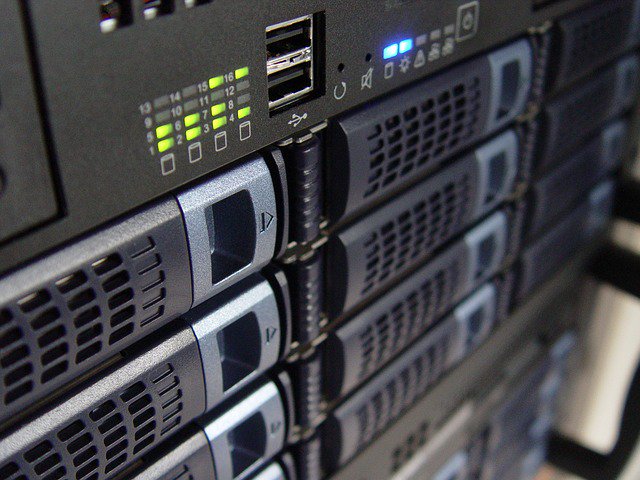 Growing organizations require enterprise infrastructure that meets and exceeds the demands of their users.
Growing organizations require enterprise infrastructure that meets and exceeds the demands of their users.
One of the biggest decisions facing CIOs is whether or not they should build their data center onsite. With cloud hosting vendors and data center colocation providers vying for your business, many IT decision makers are left crunching the numbers in order to determine which solution is best.
When you begin weighing the pros and cons of placing your data center infrastructure onsite, decision makers must consider all the angles in order to ensure a successful rollout. A recent survey conducted by the Uptime Institute suggests that over 1 and 3 enterprises will exhaust their onsite data center facilities in the coming years.
With so much on the line, how can CIOs know that they are making the right decision for their organizations?
Address The Immediate Needs of Your Organization
If you need to rapidly deploy infrastructure in order to meet a deadline, you could be forced to use a hosted solution. Consider the immediate needs of your enterprise when contemplating expanding your onsite infrastructure.
One of the major downfalls of deploying infrastructure onsite is the fact that setting up a single server could take up to a week. The IT staff must order the server, wait for it to be configured by the manufacturer, unbox the server, provision storage for the server, rack the server and install the operating system.
For organizations that require agility, this lengthy process may not be ideal. If your solutions are driven by timeliness and precision, using hosted solutions could be a better option for your specific situation.
The Hidden Costs of Onsite Data Centers
As industry experts continue to debate between the cost effectiveness of onsite data centers and IaaS providers, IT decision makers must be ready to accept the costs that come with building out your own infrastructure on site.
Typical expenses associated with the construction of an onsite data center consist of the following:
- Racks
- Networking Gear
- Fire Suppression Systems
- Air Conditioning Units
- Battery Backup
- Servers
- KVM Switches
- Telecommunication Equipment
- Door Alarms
The list could go on but these 10 items are critical for every onsite data center. While all of this seems like your run of the mill data center build, IT decision makers can sometimes become fixated on the project’s cost on paper while neglecting to calculate the real costs.
For example, your organization could incur one or more the following unexpected expenses when setting up your own onsite data center:
- Labor Costs (Overtime)
- Electrical Issues
- Air Flow Issues (Hot Spots)
- Unexpected Licensing Fees
- Environmental Issues (Facility Integrity)
If your data center project goes as planned, your organization could be able to mitigate some of these unexpected issues. More often than not, businesses find themselves having to figure out last minute “Gotchas” when building out their own data centers onsite.
When to Choose an Onsite Data Center
The two biggest motivations for choosing host your data center onsite is data sovereignty and complete control over the infrastructure.
Many enterprise level applications provide access to private or sensitive data. Since many industries have rules and regulations about where data can be physically stored, many organizations elect to go the safe route of building out their infrastructure onsite.
Organizations that do not physically have space for a new data center may elect to use a data center colocation solution, where the organization owns the infrastructure but the facility is provided by a certified third party.
Could Your Organization Utilize Hybrid Infrastructure?
Instead of building out a new onsite data center, could your business benefit from a hybrid infrastructure?
If you were to inventory all of the apps and services in your organization, could you realistically shift some of these resources into the cloud? If this is possible, you could potentially reutilize the infrastructure in your onsite data center for critical workloads while offloading non critical workloads onto virtual machines leased from IaaS providers.
Research conducted by IDG states that, “Hybrid cloud computing is the future of Enterprise IT.” IDG’s analysts go on to say that hybrid infrastructures help organizations save on IT costs. Research and Markets recently published a study showing that hybrid cloud will grow by a compound adjusted growth rate of 19.8% by 2020.
With this in mind, your organization could create a hybrid environment that bridges both onsite data centers resources and cloud resources. Enterprises commonly use site-to-site VPN connections to securely achieve connectivity between onsite resources and those hosted in the cloud. Hybrid infrastructures will become to new norm in terms of how enterprises deploy IT infrastructure. If your IT department is looking to save on costs, hybrid infrastructure may be the way to go.
To see how you can benefit from hybrid cloud computing, give us a call at (833) 482-6435 or click the banner below to schedule a consultation online. We can help you make the best choice for your business!
If you enjoyed this IT Support article, please check out other posts on our blog and join us on Facebook, Twitter, LinkedIn, and Google+ to see how else we can help your Greenville, SC or Atlanta, GA area business succeed!

